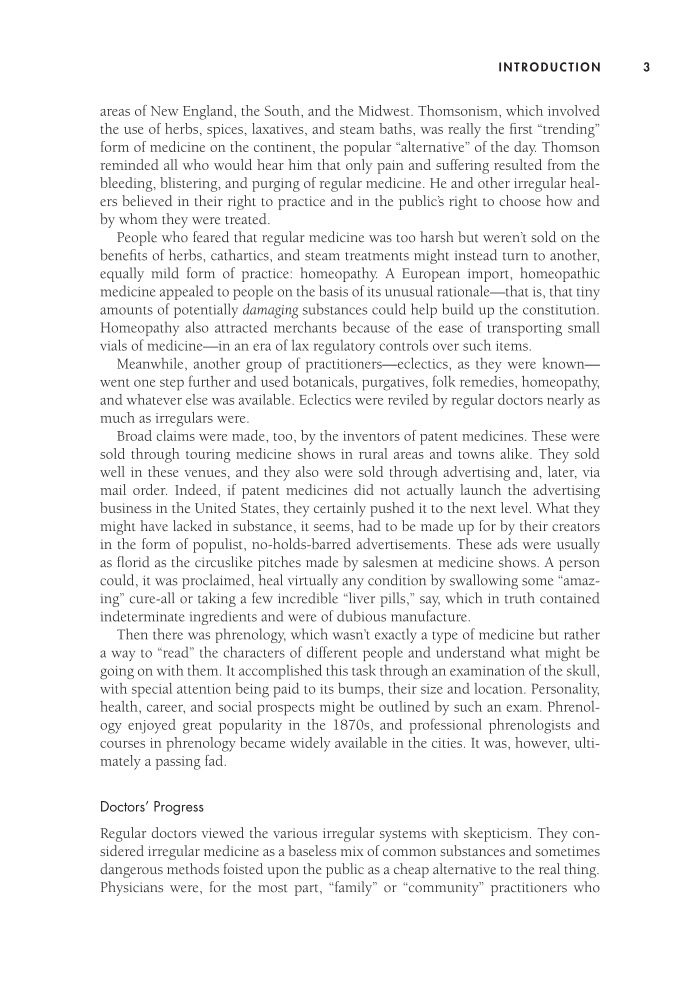Introduction 3 areas of New England, the South, and the Midwest. Thomsonism, which involved the use of herbs, spices, laxatives, and steam baths, was really the first “trending” form of medicine on the continent, the popular “alternative” of the day. Thomson reminded all who would hear him that only pain and suffering resulted from the bleeding, blistering, and purging of regular medicine. He and other irregular heal- ers believed in their right to practice and in the public’s right to choose how and by whom they were treated. People who feared that regular medicine was too harsh but weren’t sold on the benefits of herbs, cathartics, and steam treatments might instead turn to another, equally mild form of practice: homeopathy. A European import, homeopathic medicine appealed to people on the basis of its unusual rationale—that is, that tiny amounts of potentially damaging substances could help build up the constitution. Homeopathy also attracted merchants because of the ease of transporting small vials of medicine—in an era of lax regulatory controls over such items. Meanwhile, another group of practitioners—eclectics, as they were known— went one step further and used botanicals, purgatives, folk remedies, homeopathy, and whatever else was available. Eclectics were reviled by regular doctors nearly as much as irregulars were. Broad claims were made, too, by the inventors of patent medicines. These were sold through touring medicine shows in rural areas and towns alike. They sold well in these venues, and they also were sold through advertising and, later, via mail order. Indeed, if patent medicines did not actually launch the advertising business in the United States, they certainly pushed it to the next level. What they might have lacked in substance, it seems, had to be made up for by their creators in the form of populist, no-holds-barred advertisements. These ads were usually as florid as the circuslike pitches made by salesmen at medicine shows. A person could, it was proclaimed, heal virtually any condition by swallowing some “amaz- ing” cure-all or taking a few incredible “liver pills,” say, which in truth contained indeterminate ingredients and were of dubious manufacture. Then there was phrenology, which wasn’t exactly a type of medicine but rather a way to “read” the characters of different people and understand what might be going on with them. It accomplished this task through an examination of the skull, with special attention being paid to its bumps, their size and location. Personality, health, career, and social prospects might be outlined by such an exam. Phrenol- ogy enjoyed great popularity in the 1870s, and professional phrenologists and courses in phrenology became widely available in the cities. It was, however, ulti- mately a passing fad. Doctors’ Progress Regular doctors viewed the various irregular systems with skepticism. They con- sidered irregular medicine as a baseless mix of common substances and sometimes dangerous methods foisted upon the public as a cheap alternative to the real thing. Physicians were, for the most part, “family” or “community” practitioners who
Document Details My Account Print multiple pages
Print
You have printed 0 times in the last 24 hours.
Your print count will reset on at .
You may print 0 more time(s) before then.
You may print a maximum of 0 pages at a time.















































































































































































































































































































































































































































